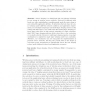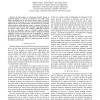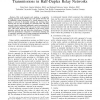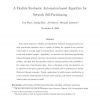151 search results - page 15 / 31 » Power Performance Trade-offs for Direct Networks |
TPDS
2002
13 years 7 months ago
2002
Sensor webs consisting of nodes with limited battery power and wireless communications are deployed to collect useful information from the field. Gathering sensed information in an...
EWSN
2009
Springer
14 years 8 months ago
2009
Springer
Sensor sleeping is a widely-used and cost-effective technique to save energy in wireless sensor networks. Protocols at different stack levels can, either individually or simultaneo...
INFOCOM
2007
IEEE
14 years 2 months ago
2007
IEEE
—In this paper, an anti-sensor network system is proposed, aiming to protect an important area from being under surveillance by an adversary’s sensor nodes. The major component...
VTC
2007
IEEE
14 years 2 months ago
2007
IEEE
— This work presents and analyzes a cooperative relaying approach which offers large scale spatial diversity and an additional coding advantage in a virtual antenna array. It uti...
IJDSN
2008
13 years 7 months ago
2008
This article proposes a flexible and distributed stochastic automaton-based network partitioning algorithm that is capable of finding the optimal k-way partition with respect to a...




